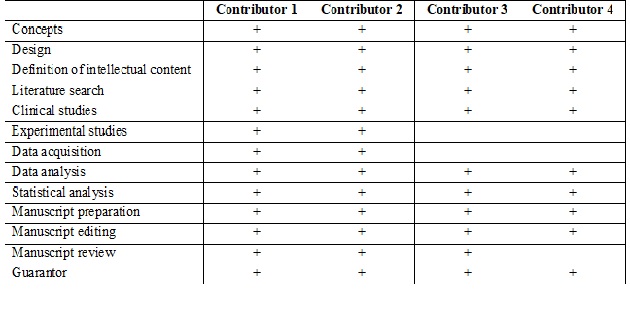Evaluation of prolactin and insulin resistance in women with polycystic ovarian syndrome
Abstract
Background: Polycystic ovarian syndrome has been one of a major public health problem in India that leads to medical consequences. It causes multifactorial in etiology such as menstrual dysfunction, hyperandrogenism, hirsutism, insulin resistance, dyslipidemia and obesity which increased risk of diabetes mellitus and cardiovascular disease. Prolactin has been reported as a potent lipogenic and diabetogenic factor, that affecting energy balance and fuel metabolism. The present study was designed to assess serum prolactin and insulin resistance in PCOS women and to compare them with healthy women as controls.
Material and Methods: A comparative study including 50 women diagnosed as PCOS and 50 age and BMI matched healthy women as controls was conducted. The age group for the study was 18-35 years. Body Mass Index was calculated as a physical parameter. Fasting blood samples were drawn to assess serum prolactin, serum insulin, HbA1c and fasting blood sugar. Insulin resistance was calculated by homeostasis model assessment.
Results: A significant increase in fasting serum insulin (p<0.001) and HOMA – IR (p<0.001) were found in patients with PCOS in comparison with controls. Mean BMI, prolactin, HbA1c and FBS were found elevated in the PCOS women but they were not statistically significant. No significant correlations were found between BMI, serum prolactin and serum insulin.
Conclusions: The current study provides further evidence that significantly higher fasting insulin and HOMA in PCOS group indicates presence of IR. IR in PCOS group may have a potential role in the prediction of dysglycemic disease in women with PCOS. This study could not find any significant correlation between serum prolactin, serum insulin and BMI.
Downloads
References
J Adams, D W Polson, and S Franks. Prevalence of polycystic ovaries in women with anovulation and idiopathic hirsutism. Br Med J (Clin Res Ed). 1986 Aug 9; 293(6543): 355–359. doi: https://doi.org/10.1136/bmj.293.6543.355
Car BR, Williams’s textbook of Endocrinology. 8th ed. Philadelphia.W.B Saunders Co, 1992; 733-798.
A. Galluzzo, M. C. Amato, and C. Giordano. Insulin resistance and polycystic ovary syndrome. Nutr Metab Cardiovasc Dis. 2008 Sep;18(7):511-8. doi: https://doi.org/10.1016/j.numecd.2008.05.004. Epub 2008 Jul 25.
Teede HJ, Hutchison S, Zoungas S, Meyer C. Insulin resistance, the metabolic syndrome, diabetes, and cardiovascular disease risk in women with PCOS. Endocrine. 2006 Aug;30(1):45-53.
Wild RA. Obesity, lipids, cardiovascular risk, and androgen excess. Am J Med. 1995 Jan 16;98(1A):27S-32S.
Aral SO, Cates W Jr. The increasing concern with infertility. Why now? JAMA. 1983 Nov 4;250(17):2327-31.
Shou-Kul Xiang, Fei Hua, Ying Tang, Xiao-Hong Jiang, Qi Zhuang, Feng-Juan Qian. Relationship between serum lipoprotein ratios and insulin resistance in polycystic ovary syndrome. International Journal of Endocrinology. 2012 April; 2012(2012), 173281:1-4.
Roy George K., Malini N. A. The prevalence and etiology of polycystic ovarian syndrome (PCOS) as a cause of female infertility in central Travancore. The bioscan 2014; 9(1):01-06.
Lerchbaum E, Schwetz V, Giuliani A, et al. Assessment of glucose metabolism in polycystic ovary syndrome: HbA1c or fasting glucose compared with the oral glucose tolerance test as a screening method. Hum Reprod. 2013 Sep;28(9):2537-44. doi: https://doi.org/10.1093/humrep/det255. Epub 2013 Jun 11.
Matthias Mohlig, Annette Jurgens, Joachim Spranger, Kurt Hoffmann, Martin O Weickert, Hans W Schlosser, et al. The androgen receptor CAG repeat modifies the impact of testosterone on insulin resistance in women with polycystic ovary syndrome. European Journal of Endocrinology 2006; 155:127–30.
Zadeh-Vakili A, Tehrani FR, Hashemi S, Amouzegar A, Azizi F. Relationship between Sex Hormone Binding Globulin, Thyroid Stimulating Hormone, Prolactin and Serum Androgens with Metabolic Syndrome Parameters in Iranian Women of Reproductive Age. J Diabetes Metab 2012; S2:008.
Tahia H. Saleem, Howaida A. Nafady, Housny A. Hassan. Serum Prolactrin and Blood Glucose Levels Before and After an Oral Glucose-load in Patients with Diabetes Mellitus and Liver Cirrhosis. Asian Journal of Medical Sciences 2013; 5(1): 09-18.
Zawadic JK, Danif A. Diagnostic criteria for polycysitic ovarian syndrome towards a rational approach , polycystic ovaria syndrome. Cambridge , England: Blackwell science ,1992:377-384.
Wild RA. Long-term health consequences of PCOS. Hum Reprod Update. 2002 May-Jun;8(3):231-41. DOI: https://doi.org/10.1093/humupd/8.3.231.
Thanyarat Wongwananuruk, Manee Rattanachaiyanont, Suchada Indhavivadhana et al. Prevalence and Clinical Predictors of Insulin Resistance in ReproductiveAged Thai Women with Polycystic Ovary Syndrome. Int J Endocrinol. 2012; 2012: 529184. doi: https://doi.org/10.1155/2012/529184.
Seow KM, Juan CC, Wu LY, et al. Serum and adipocyte resistin in polycystic ovary syndrome with insulin resistance. Hum Reprod. 2004 Jan;19(1):48-53. DOI: https://doi.org/10.1093/humrep/deh010.
Ovalle F, Azziz R. Insulin resistance, polycystic ovary syndrome, and type 2 diabetes mellitus. Fertil Steril. 2002 Jun;77(6):1095-105.
Shou-Kul Xiang, Fei Hua, Ying Tang, Xiao-Hong Jiang, Qi Zhuang, Feng-Juan Qian. Relationship between serum lipoprotein ratios and insulin resistance in polycystic ovary syndrome. International Journal of Endocrinology. 2012 April; 2012(2012), 173281:
Puder JJ, Varga S, Kraenzlin M, et al. Central fat excess in polycystic ovary syndrome: relation to low-grade inflammation and insulin resistance. J Clin Endocrinol Metab. 2005 Nov;90(11):6014-21. Epub 2005 Aug 16.
Sunita J Ramanand, Balasaheb B Ghongane, Jaiprakash B Ramanand, Milind H Patwardhan, Varsha M Patwardhan, Ravi Ghanghas et al. Hormonal Profile of Polycystic Ovary Syndrome (PCOS) In Indian Women. Research Journal of Pharmaceutical, Biological and Chemical Sciences Oct-Dec 2012; 3(4):1159-72.
Ansam A. Al-Bayatti. Insulin resistance and upper-body obesity in polycystic ovary syndrome. Middle East Fertility Society Journal 2006; 11(3):202-9.
Soodabeh Zandi, Saeideh Farajzadeh, Hamideh Safari. Prevalence of polycystic ovary syndrome in women with acne: hormone profiles and clinical findings. Journal of Pakistan Association of Dermatologists 2010; 20: 194-198.
Wang T, Lu J, Xu Y, et al. Circulating prolactin associates with diabetes and impaired glucose regulation: a population-based study. Diabetes Care. 2013 Jul;36(7):1974-80. doi: https://doi.org/10.2337/dc12-1893. Epub 2013 Jan 22.
Arumugam R, Fleenor D, Lu D, et al. Differential and complementary effects of glucose and prolactin on islet DNA synthesis and gene expression. Endocrinology. 2011 Mar;152(3):856-68. doi: https://doi.org/10.1210/en.2010-1258. Epub 2011 Jan 14.
Lisa Balbach, Henri Wallaschofski, Henry Völzke, Matthias Nauck, Marcus Dörr, Robin Haring. Serum prolactin concentrations as risk factor of metabolic syndrome or type 2 diabetes? BMC Endocrine Disorders 2013; 13(12):1-8.



 OAI - Open Archives Initiative
OAI - Open Archives Initiative


